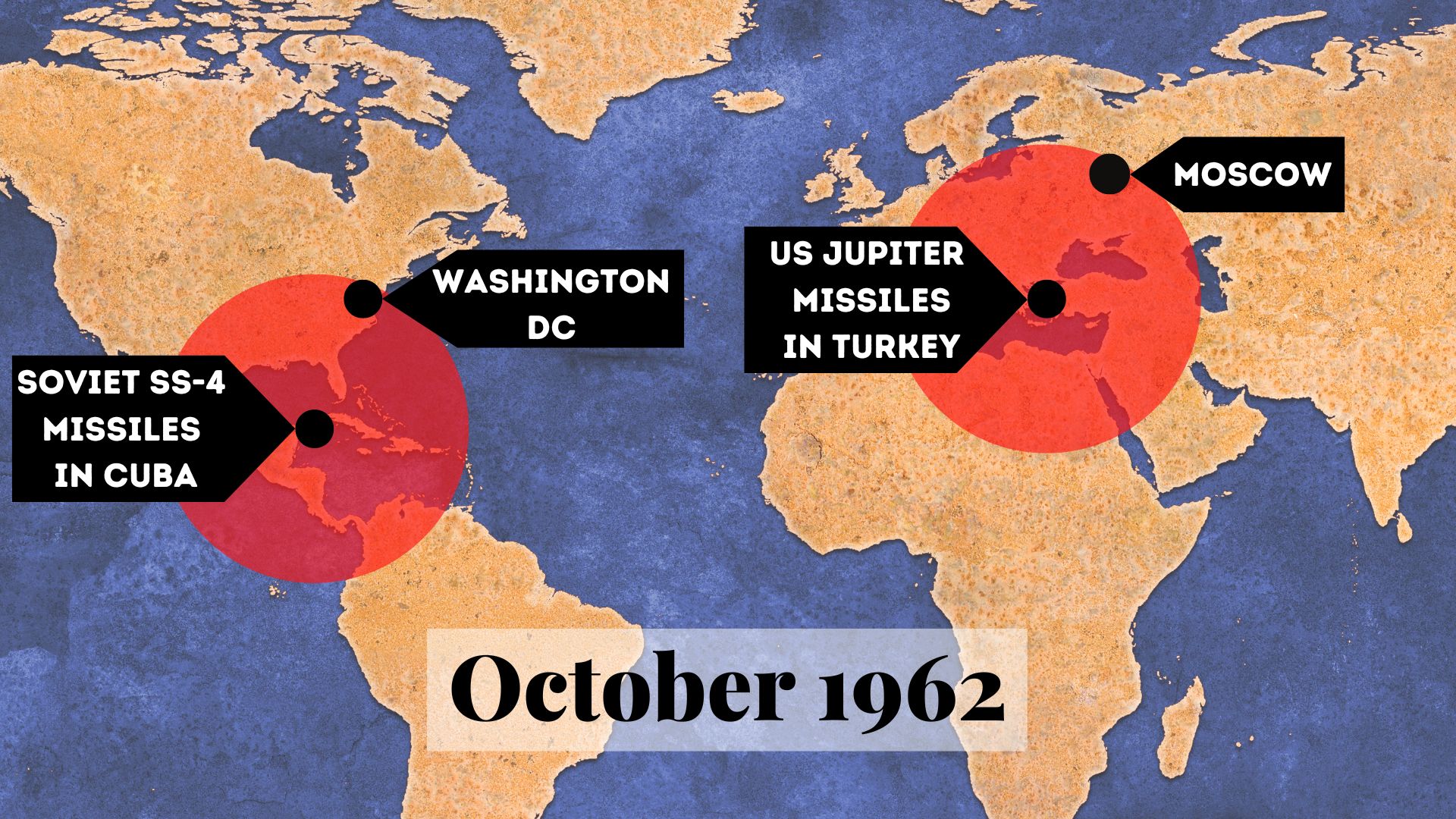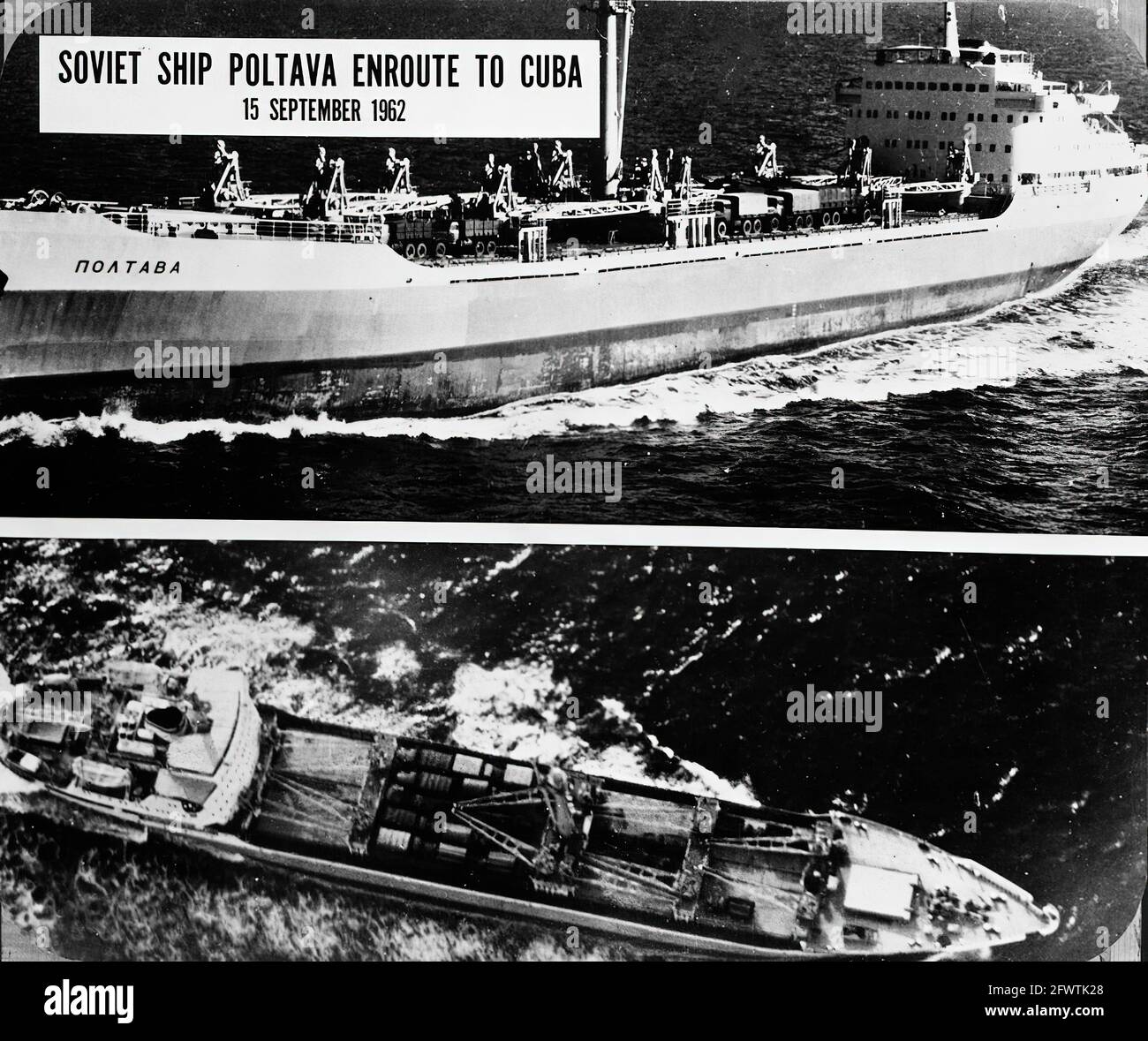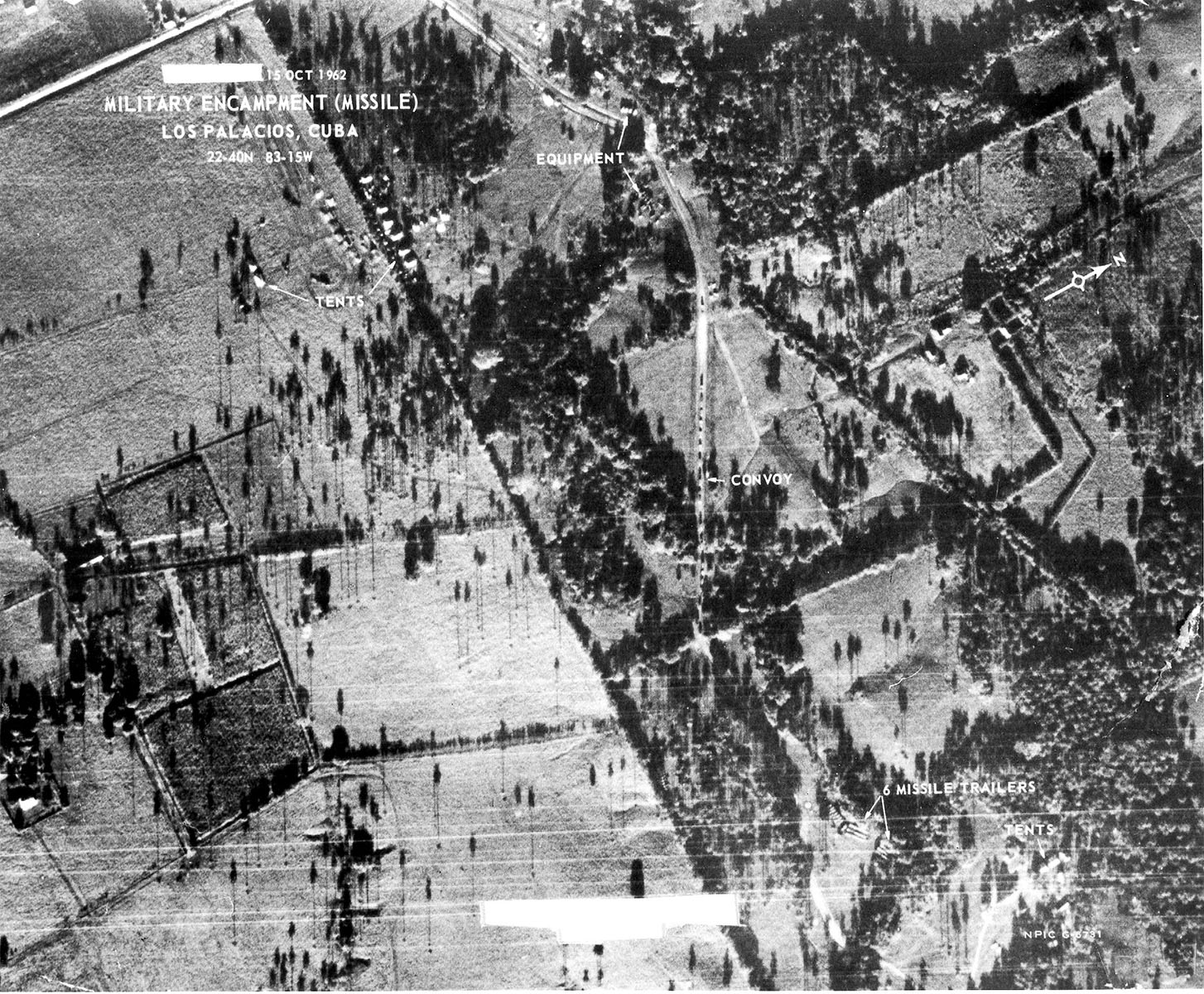Cuba 1962: The Untold Story Of Tension, Survival, And Global Impact
Picture this: It's October 1962, and the world is on the brink of nuclear war. Tensions are sky-high, and everyone's holding their breath. The Cuban Missile Crisis became one of the most pivotal moments in modern history, shaping global politics for decades to come. But what really went down during those 13 nerve-wracking days? Let's dive into the heart of Cuba 1962 and uncover the truths behind this historic event.
Now, imagine yourself sitting in a dimly lit room, flipping through old newspapers and classified documents. This is no ordinary story—it’s a tale of espionage, diplomacy, and survival. The Cuban Missile Crisis wasn’t just a conflict between two superpowers; it was a wake-up call for humanity. It showed us how close we came to wiping ourselves off the face of the planet.
As we explore Cuba 1962, we’ll break down the events that unfolded, the key players involved, and the long-lasting effects on international relations. So buckle up, because this is gonna be one wild ride through history!
- The Usos Age A Deep Dive Into The Wrestling Dynastys Journey
- Is Doordash Or Ubereats Better For Drivers The Ultimate Comparison
Table of Contents
- Background of Cuba 1962
- Key Players in the Crisis
- How Events Unfolded
- The Role of Diplomacy
- The Nuclear Threat
- Public Reaction Around the World
- The Aftermath of Cuba 1962
- Global Impact and Lessons Learned
- Cultural References in Media
- Conclusion: Why Cuba 1962 Matters Today
Background of Cuba 1962
So, what exactly led to Cuba 1962? Well, it all started with Fidel Castro coming to power in 1959. He turned Cuba into a communist state, which didn’t exactly sit well with the U.S. government. Fast forward a few years, and you’ve got a perfect storm brewing. The Cold War was heating up, and both the U.S. and Soviet Union were flexing their muscles on the global stage.
In 1962, the Soviet Union decided to place nuclear missiles in Cuba, just 90 miles from the American coastline. This move was like poking a bear with a stick—except the bear had atomic weapons. The U.S. didn’t take too kindly to this development, and tensions escalated rapidly.
Why Did the Soviets Do It?
Now, you might be wondering why the Soviets would do such a thing. Turns out, they had a couple of reasons. First, they wanted to protect their ally, Fidel Castro, from any potential U.S. invasion. Second, they saw an opportunity to level the playing field. After all, the U.S. had missiles in Turkey, close to the Soviet border, so why shouldn’t the Soviets get some leverage?
- Tom Hardy As Batman Why The Dark Knight Could Be In Good Hands
- Baldwin Brothers The Powerhouse Family In Hollywood
Key Players in the Crisis
Every great drama needs its cast of characters, and the Cuban Missile Crisis was no exception. Here are the main players who shaped the events of Cuba 1962:
- John F. Kennedy: The 35th President of the United States, JFK was under immense pressure to handle the crisis without sparking World War III.
- Nikita Khrushchev: The leader of the Soviet Union, Khrushchev made the bold decision to place missiles in Cuba, hoping it would give the Soviets the upper hand.
- Fidel Castro: The Cuban revolutionary leader, Castro welcomed Soviet support but later criticized Khrushchev for backing down.
How Events Unfolded
Let’s rewind to October 14, 1962, when a U-2 spy plane captured images of Soviet missile sites being constructed in Cuba. The U.S. government was stunned. Over the next few days, JFK and his advisors debated their options. Should they launch an airstrike? Invade Cuba? Or try diplomacy?
On October 22, JFK addressed the nation in a televised speech, revealing the existence of the missiles and announcing a naval blockade around Cuba. This move, known as a “quarantine,” aimed to prevent further Soviet shipments of weapons to the island.
The Thirteen Days That Shook the World
For 13 days, the world held its breath as negotiations between the U.S. and Soviet Union played out behind closed doors. There were moments of high drama, like when a U-2 plane was shot down over Cuba, killing its pilot. But eventually, cooler heads prevailed.
The Role of Diplomacy
Thankfully, diplomacy came to the rescue. After intense back-and-forth communications, Khrushchev agreed to remove the missiles from Cuba in exchange for a U.S. promise not to invade the island. Secretly, the U.S. also agreed to dismantle its own missiles in Turkey, though this part of the deal wasn’t made public at the time.
This episode proved that even in the face of extreme adversity, dialogue and compromise can save the day. It’s a lesson that still resonates today, especially in an era where tensions between nations often run high.
The Nuclear Threat
One of the scariest aspects of Cuba 1962 was the very real possibility of nuclear war. Both the U.S. and Soviet Union had enough firepower to destroy the planet several times over. The thought of millions—or even billions—of lives being wiped out in an instant was terrifying.
But here’s the thing: both sides realized just how catastrophic a nuclear war would be. This realization led to the establishment of the Nuclear Test Ban Treaty in 1963, marking the beginning of efforts to control the spread of nuclear weapons.
Public Reaction Around the World
While world leaders were busy negotiating, ordinary people were glued to their radios and TVs, waiting anxiously for news. In the U.S., schools conducted drills to prepare students for a possible nuclear attack. Meanwhile, in the Soviet Union, citizens were largely kept in the dark about the crisis.
Internationally, the crisis sparked protests and calls for peace. People from all walks of life demanded that their governments find a way to resolve the conflict without resorting to violence.
The Aftermath of Cuba 1962
Once the crisis was over, both the U.S. and Soviet Union took steps to reduce the risk of future confrontations. The Hotline Agreement of 1963 established a direct communication link between Washington and Moscow, allowing leaders to quickly defuse tensions if needed.
However, the relationship between the two superpowers remained strained. Trust had been broken, and both sides continued to engage in an arms race. It wouldn’t be until the end of the Cold War in the late 1980s that true progress toward peace would be made.
Lessons Learned
The Cuban Missile Crisis taught the world some valuable lessons. First, it underscored the importance of communication and transparency in international relations. Second, it highlighted the dangers of nuclear proliferation and the need for disarmament.
Global Impact and Lessons Learned
The impact of Cuba 1962 extends far beyond those 13 days in October. It shaped global politics for decades, influencing everything from foreign policy to military strategy. Today, as new challenges emerge, such as cyber warfare and climate change, the lessons of the Cuban Missile Crisis remain relevant.
It’s a reminder that even in the most dire situations, there’s always room for negotiation and compromise. And that’s something we should never forget.
Cultural References in Media
Pop culture has long been fascinated by the Cuban Missile Crisis. Movies like “Thirteen Days” and “The Missiles of October” dramatize the events of Cuba 1962, bringing the story to life for new generations. Books, documentaries, and even video games have explored the topic, ensuring that its legacy lives on.
These cultural references help keep the memory of Cuba 1962 alive, reminding us of the stakes involved and the courage it took to avert disaster.
Conclusion: Why Cuba 1962 Matters Today
In conclusion, the Cuban Missile Crisis was a defining moment in history that continues to shape our world today. From the establishment of the Hotline Agreement to the push for nuclear disarmament, its impact is undeniable.
So, what can we take away from Cuba 1962? For one, it shows us the importance of staying calm under pressure and finding peaceful solutions to conflicts. It also serves as a warning about the dangers of nuclear weapons and the need for global cooperation.
Now, it’s your turn. Share your thoughts on this pivotal moment in history. Leave a comment below or check out our other articles for more insights into the world of history and politics. Together, let’s keep the conversation going!



Detail Author:
- Name : Abbigail Buckridge
- Username : brakus.marilyne
- Email : cummerata.florian@gmail.com
- Birthdate : 1976-06-19
- Address : 29362 Gorczany Road Suite 119 Ginamouth, AR 67558
- Phone : +17548686407
- Company : Cassin PLC
- Job : Coating Machine Operator
- Bio : Maiores et quaerat id reprehenderit quo laborum doloremque voluptates. Dolorem facere soluta quis dolores alias quia.
Socials
instagram:
- url : https://instagram.com/dee_tremblay
- username : dee_tremblay
- bio : In in ex porro pariatur. Aut nisi voluptate quam alias nihil. Est et nobis distinctio saepe.
- followers : 5724
- following : 685
linkedin:
- url : https://linkedin.com/in/deetremblay
- username : deetremblay
- bio : Et ipsum soluta deserunt id iure.
- followers : 3554
- following : 2725
tiktok:
- url : https://tiktok.com/@dee_xx
- username : dee_xx
- bio : Voluptatum voluptas alias officia id quis.
- followers : 3066
- following : 1286
facebook:
- url : https://facebook.com/dee_tremblay
- username : dee_tremblay
- bio : Nesciunt sint necessitatibus tenetur est culpa sed.
- followers : 5198
- following : 1909
twitter:
- url : https://twitter.com/tremblay2012
- username : tremblay2012
- bio : Fugiat id magnam hic harum occaecati. Maiores quaerat earum doloribus qui fugit nesciunt. Molestiae voluptatem facere magni nobis.
- followers : 5890
- following : 2952
